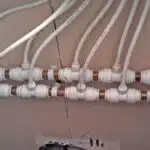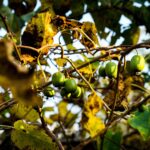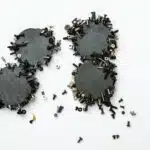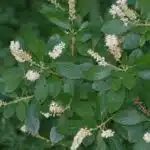Dutchman’s Pipe Vines, also known as Aristolochia macrophylla, are a fascinating plant species that can add character and beauty to any garden or landscape. These vigorous climbers are native to eastern North America and are known for their large, heart-shaped leaves and unusual flowers that resemble the shape of a Dutchman’s pipe. While they may seem intimidating to grow and care for, they are relatively easy to maintain with the right techniques.
In this article, we will explore the essential steps required to grow healthy Dutchman’s Pipe Vines successfully. From selecting the ideal planting location to maintaining soil moisture levels, we will cover every aspect of caring for these plants throughout their growth cycle. With our expert guidance, you will be able to cultivate thriving vines that not only enhance your garden aesthetics but also contribute positively to the environment around you.
Understanding Dutchman’s Pipe Vines
What makes the Dutchman’s Pipe vine unique and distinctive? This is a question that many horticulture enthusiasts often ask. The Dutchman’s Pipe vine belongs to the Aristolochiaceae family and is native to North America, particularly in the eastern part of the continent. It is one of the most recognizable vines because of its unusual flowers that resemble curved pipes or flutes.
Distinguishing characteristics of the Dutchman’s Pipe vine include its large heart-shaped leaves, which are up to six inches wide and twelve inches long. The plant is a fast-growing woody climber that can reach up to twenty feet tall in just a few years. Its greenish-yellow flowers bloom in late spring or early summer, and they are followed by large seed pods that can be as long as five inches.
Fun facts about Dutchman’s Pipe vines include their association with butterflies and moths, which use them as host plants for their caterpillars. Additionally, some species of Dutchman’s Pipe vines have been used traditionally for medicinal purposes. Due to its unique appearance and characteristics, this plant has become increasingly popular among gardeners who want to add an exotic touch to their landscape.
When it comes to growing and caring for these vines, selecting the right variety is essential. Different varieties have different growth habits, flower colors, and hardiness zones. In the next section, we will discuss how to choose the right variety of Dutchman’s Pipe vine for your garden based on your specific needs and preferences.
Choosing The Right Variety
Understanding Dutchman’s Pipe Vines is crucial when it comes to growing and caring for them. They require a lot of attention, and their growth rate is relatively slow. Dutchman’s Pipe vines are known for their large heart-shaped leaves and unique pipe-like flowers that can grow up to 10 inches long. They can be grown on trellises, pergolas, or fences, adding a touch of exotic beauty to your garden.
Different Dutchman’s Pipe varieties have different needs when it comes to sunlight and soil conditions. Some varieties prefer partial shade, while others require full sun exposure. The soil should be well-draining with a pH level between 6.0 and 7.5. It is essential to choose the right variety that will thrive in your area’s climate and soil conditions.
Growing Dutchman’s Pipe in containers is an excellent option for those with limited garden space or poor soil quality. The container must be at least 20-24 inches in diameter, allowing enough room for the roots to spread out. Use high-quality potting soil mixed with compost or organic matter to ensure proper drainage and nutrition for the plant. Watering frequency may increase during hot summer months, so keep an eye on the moisture level of the soil.
In conclusion, Different Dutchman’s Pipe varieties have unique requirements when it comes to sunlight and soil conditions—selecting the ideal planting location plays a critical role in ensuring successful growth and care of this exotic plant species. Growing them in containers is an excellent alternative for those who have limited garden space or poor soil quality but still want to enjoy its beauty in their homes or patios. With proper attention and care, Dutchman’s Pipe vines can become a stunning addition to any landscape design project!
Selecting The Ideal Planting Location
When selecting the ideal planting location for dutchman’s pipe vines, it is important to consider the sun exposure, soil quality, and drainage available in the area. Plants should be placed in a sunny to partially sunny location in order to receive the necessary amount of sunlight. Soil should be nutrient rich and well draining in order to provide the best conditions for growth. Drainage should be taken into account to ensure the plant does not become waterlogged. Ensuring these conditions are met will provide the necessary environment for the dutchman’s pipe vines to thrive.
Sunlight
When it comes to growing and caring for Dutchman’s pipe vines, selecting the ideal planting location is crucial. One important factor to consider is sunlight. These plants thrive in optimal exposure to sunlight, so be sure to choose a location that receives plenty of direct sunlight each day. However, it’s also important to manage shade, as too much shade can inhibit growth and prevent the plant from flowering.
To ensure your Dutchman’s pipe vine gets enough sunlight, look for a location that receives at least six hours of direct sun each day. This can be achieved by planting the vine in an area with southern or western exposure. Avoid planting in areas where buildings or trees cast shadows during the day. If you’re planting in an area with less than optimal sun exposure, consider using reflective surfaces like white stones or light-colored walls to help reflect additional light onto the plant.
While Dutchman’s pipe vines love sunlight, they also need some protection from extreme heat and intense afternoon sun. If you live in an area with hot summers, try to find a location that provides some shade during the hottest part of the day. You can also provide artificial shade by using a trellis or pergola to drape a lightweight fabric over the plant during peak sun hours. With proper attention to sunlight management, your Dutchman’s pipe vine will thrive and reward you with beautiful blooms year after year.
Soil
When it comes to selecting the ideal planting location for your Dutchman’s pipe vine, you also need to consider the soil. The soil provides essential nutrients and support for the growth of this plant. One important factor to look into is soil drainage. Poorly draining soil can lead to root rot, which can ultimately cause the plant to die.
To improve drainage, choose a planting location in an area with well-draining soil. You can also amend your existing soil by adding organic matter like compost or peat moss, which helps increase water retention while improving drainage. Another crucial factor to consider is soil pH levels. Dutchman’s pipe vines prefer a slightly acidic to neutral pH level, ideally between 6.0 and 7.0.
To ensure optimal growth and blooming of your Dutchman’s pipe vine, have your soil tested before planting. This allows you to adjust the pH level accordingly through amendments like adding lime or sulfur depending on whether you need to raise or lower pH levels respectively. With proper attention given to both sunlight exposure and optimal soil conditions, you can enjoy a healthy and thriving Dutchman’s pipe vine in your garden for years to come.
Drainage
Ensuring optimal growth and blooming of Dutchman’s pipe vines require careful consideration when selecting the ideal planting location, and this includes improving drainage. Poorly draining soil can lead to root rot, which ultimately causes the plant to die. Therefore, it is essential to choose a planting location in an area with well-draining soil or amend your existing soil by adding organic matter like compost or peat moss.
Improving drainage can help prevent waterlogged soils that may suffocate roots, which is detrimental to the growth of Dutchman’s pipe vines. To achieve this, ensure that your planting location has proper drainage channels, such as slopes or raised beds. Additionally, you can amend your soil by incorporating sand or perlite into it to improve its pore space for better water movement.
Soil composition plays a vital role in drainage improvement techniques for Dutchman’s pipe vines. Understanding your soil pH levels is crucial since these plants prefer slightly acidic to neutral pH levels ranging between 6.0 and 7.0. Having your soil tested before planting allows you to adjust its pH level accordingly through amendments like adding lime or sulfur depending on whether you need to raise or lower pH levels respectively. Ultimately, proper attention given to both sunlight exposure and optimal soil conditions will result in a healthy and thriving Dutchman’s pipe vine garden for years to come.
Preparing The Soil
Soil preparation is an essential aspect of growing and caring for Dutchman’s Pipe vines. The soil should be well-drained, rich in organic matter, and have optimal pH levels. Before planting, it is necessary to prepare the soil by removing any weeds or debris and assessing its quality.
To ensure optimal growth, Dutchman’s Pipe vines require a slightly acidic soil with a pH level between 6.0 to 6.5. It is recommended to test the soil using a pH meter or testing kit before planting. If the pH level is too low, add lime to raise it; if it is too high, add sulfur to lower it.
Apart from optimal pH levels, the soil should also be enriched with organic matter such as compost or well-rotted manure. This will improve soil texture, increase water holding capacity, and provide essential nutrients for healthy growth. Once the soil has been prepared, you can proceed with planting Dutchman’s Pipe vines.
Planting Dutchman’s Pipe Vines
Planting Dutchman’s Pipe Vines is a relatively easy process that can be accomplished by following a few simple planting techniques. First, it is essential to choose the right location for your vine. The Dutchman’s Pipe Vine thrives in partial shade, so it is best to plant them in an area with some shade during the hottest parts of the day. Additionally, these vines require fertile soil that is well-drained and moist.
To begin planting, dig a hole twice as wide as the root ball of your vine and deep enough to accommodate its entire length. Loosen up the soil at the bottom of the hole to help the roots establish themselves more quickly. Once you have placed your vine into the hole, backfill it with soil and tamp it down firmly to remove any air pockets that may have formed around its roots.
Maintenance tips for your Dutchman’s Pipe Vine include regular pruning and fertilization. Pruning should be done annually in early spring or late winter before new growth begins. Fertilize with a balanced fertilizer once every two weeks during the growing season, but avoid over-fertilizing as this can lead to poor growth habits and weak vines that are more susceptible to pests or diseases.
With proper planting techniques and maintenance tips, your Dutchman’s Pipe Vine will thrive and add beauty to your garden for years to come. In our next section, we will discuss watering techniques that will help ensure your vine stays healthy and vibrant throughout its life cycle.
Watering Techniques
Watering Techniques:
Proper watering is crucial for the growth and health of Dutchman’s pipe vines. Watering frequency depends on various factors such as weather, soil type, and vine age. Generally, it is recommended to water the plants deeply once a week during the growing season. However, if there is prolonged drought or extreme heat, watering may need to be increased to twice a week.
One way to determine whether your Dutchman’s pipe vine needs water is by checking the soil moisture level. Stick your finger about an inch into the soil near the base of the plant. If it feels dry at this depth, it’s time to water. Be careful not to overwater your vines as this can lead to root rot and other problems. Always allow the topsoil to dry out before watering again.
In addition to proper frequency and amount of watering, it is also important to consider the time of day when watering your Dutchman’s pipe vines. It is best to water early in the morning or late in the evening when temperatures are cooler and evaporation rates are lower. This ensures that the plant has enough time to absorb water before it evaporates from heat and sunlight. With proper watering techniques, you can ensure healthy and robust growth for your Dutchman’s pipe vines.
Moving on from proper watering techniques, let’s discuss how fertilizing your vines can further promote their growth and health.
Fertilizing Your Vines
To keep your Dutchman’s pipe vines healthy and thriving, it is important to fertilize them regularly. Fertilizers contain the essential nutrients that plants need to grow, such as nitrogen, phosphorus, and potassium. Using organic fertilizers can be a great way to ensure that your vines receive these nutrients without harming the environment. Organic fertilizers are made from natural materials like compost, bone meal, and blood meal.
On the other hand, synthetic fertilizers are made from chemical compounds that can harm the environment if not used properly. These fertilizers often contain high levels of nitrogen and phosphorus which can leach into groundwater or cause algal blooms in bodies of water. It is best to avoid using synthetic fertilizers on Dutchman’s pipe vines or any other plants in your garden.
To determine which organic fertilizer is best for your Dutchman’s pipe vines, take a look at the table below:
| Fertilizer Type | Nutrient Content | Advantages | Disadvantages |
|---|---|---|---|
| Compost | Low NPK ratio but rich in micronutrients and organic matter | Improves soil structure and fertility; promotes root growth; reduces soil erosion | Slow release rate may not provide enough nutrients for heavy feeders |
| Fish Emulsion | High in nitrogen and micronutrients; fast acting | Boosts vegetative growth; enhances flowering and fruiting; non-burning formula won’t harm plants if overused | Strong odor may attract pests or offend neighbors; frequent applications needed |
| Bone Meal | High in phosphorus; slow release formula | Stimulates root growth; promotes flower formation and seed production; improves overall plant health and vigor | May attract rodents or wildlife looking for bone fragments |
By choosing the right organic fertilizer for your Dutchman’s pipe vines, you can ensure they have all the nutrients they need to thrive without harming the environment. In addition to regular fertilizing, it’s important to prune and train your vines for optimal growth, which we will discuss in the next section.
Pruning And Training Your Vines
Proper pruning and training techniques are crucial for the health and productivity of your Dutchman’s pipe vine. Pruning should be done in late winter or early spring, before new growth appears. The goal is to remove dead, diseased, or damaged wood, as well as any crossing branches that could rub against each other and create wounds. If left unattended, these wounds can become entry points for pests and diseases.
When it comes to training your vines, you have several options. You can allow them to grow freely on a trellis or fence, or you can shape them into a specific form, such as an arch or a topiary. To achieve your desired shape, you’ll need to use ties or clips to hold the stems in place until they become established. Be careful not to tie them too tightly, as this can damage the bark and restrict their growth.
Pruning methods will vary depending on the size and age of your vine. Young vines should be pruned lightly to encourage branching and bushiness, while mature vines should be pruned more heavily to promote fruit production. In general, you should aim to remove no more than one-third of the plant’s total foliage at any one time. This will ensure that your vine stays healthy and vigorous for years to come.
Moving forward, it’s important to know how to deal with pests and diseases that may affect your Dutchman’s pipe vine. By taking preventative measures through proper pruning and training techniques, you can minimize the likelihood of infestations or infections. However, if you do encounter problems down the line, there are several effective treatment options available that we will explore in the next section.
Dealing With Pests And Diseases
- Pest control is an important factor in ensuring healthy Dutchman’s pipe vine growth and should be implemented as part of an integrated pest management system.
- Proper cultural practices, such as selecting a site with well-drained soil, can help to prevent many common diseases that can affect Dutchman’s pipe vine.
- Recognizing the symptoms of common pests and diseases is key to properly identifying problems and allowing for timely interventions.
- Routine monitoring of Dutchman’s pipe vine plants is also important in order to detect pests and diseases early on.
- A variety of pest control methods, such as physical removal, use of insecticides, and biological control, can be used to manage pest populations on Dutchman’s pipe vine plants.
- Preventative measures, such as proper sanitation and avoiding over-fertilization, can help to reduce the risk of disease infection in Dutchman’s pipe vine plants.
Pest Control
Dutchman’s pipe vines are a beautiful addition to any garden, but like all plants, they can be susceptible to pests and diseases. Organic pest control is always the first line of defense when dealing with such issues. There are many natural remedies that can be used to keep pests at bay, including companion planting and using insecticidal soaps.
Companion planting involves growing certain plants alongside your Dutchman’s pipe vine that will help deter pests naturally. For example, marigolds are known to repel nematodes and other harmful insects, while attracting beneficial ones like ladybugs. Insecticidal soaps made from natural ingredients like neem oil or pyrethrum can also be effective in controlling common pests like aphids and spider mites.
If organic pest control methods don’t work or the infestation is severe, chemical pest control may be necessary. However, it’s important to use caution when using chemicals around your Dutchman’s pipe vine as they can harm both the plant and beneficial insects in the area. Always follow the instructions carefully and avoid spraying during periods of high heat or wind. With proper care and attention, you can keep your Dutchman’s pipe vine healthy and free from pests for years to come.
Disease Prevention
Preventive measures are crucial in keeping Dutchman’s pipe vines healthy and free from diseases. One of the most effective ways to prevent diseases is by maintaining proper hygiene in the garden. Regularly remove fallen leaves, dead branches, and other debris that may harbor harmful fungi or bacteria. Additionally, mulching around the base of the plant can help retain soil moisture while preventing splashing of soil-borne pathogens onto the leaves.
Early detection is also essential in disease prevention. Regularly inspect your Dutchman’s pipe vine for signs of disease such as discolored or wilting leaves, unusual growth patterns, or spots on the foliage. Catching diseases early can help prevent them from spreading to other parts of the plant or neighboring plants.
Proper cultural practices can also go a long way in preventing diseases. Ensure that your Dutchman’s pipe vine is planted in well-draining soil and receives adequate sunlight and nutrients. Overwatering or over-fertilizing can weaken the plant and make it more susceptible to diseases.
By implementing preventive measures, practicing early detection, and following proper cultural practices, you can keep your Dutchman’s pipe vine healthy and thriving for years to come.
Identifying Problems
In dealing with pests and diseases, it is crucial to identify problems early on. By recognizing the signs of pest infestations or disease symptoms, you can take effective measures to prevent further damage to your Dutchman’s pipe vine. As a horticulture expert, I recommend regularly inspecting your plant for any unusual growth patterns, discoloration, or wilting leaves.
Preventative measures are also essential in identifying problems before they become severe. Regularly removing fallen leaves and debris can prevent the buildup of harmful fungi and bacteria that may attract pests or cause diseases. Additionally, maintaining proper cultural practices such as providing adequate sunlight and nutrients can increase the plant’s resistance to pest infestation and disease.
Effective solutions for identifying problems include natural remedies such as neem oil or insecticidal soap for pest control, as well as fungicides for treating diseases. As an expert in horticulture, I highly recommend using organic methods whenever possible to avoid harmful chemicals that may harm beneficial insects or pollinators. By implementing these solutions and regularly monitoring your Dutchman’s pipe vine for potential issues, you can help ensure its health and longevity.
Propagation Methods
Propagation Methods:
Dutchman’s pipe vines can be propagated by both cuttings and seeds. Propagating through cuttings is a common method because it is less time-consuming than growing from seed. To propagate through cuttings, take semi-hardwood stem cuttings in the late summer or early fall. Make sure the cutting is at least 6 inches long and remove all leaves except for two or three at the top. Dip the base of the cutting in rooting hormone, then plant it in moist potting soil. Keep the soil moist and place the pot in a warm location with bright, indirect light.
Propagation through seeds takes more time and patience than propagating through cuttings. Collect mature seed pods from your dutchman’s pipe vine in late summer or early fall. Allow them to dry out a bit before opening them to extract the seeds. Plant these seeds in a container filled with well-draining soil mix about an inch deep. Keep the soil moist and place it in a warm location with bright, indirect light. Germination will occur within one to two months.
Nursery Care:
Once you have propagated your dutchman’s pipe vine, it’s important to give them proper nursery care until they are ready to be planted outside. Place newly propagated cuttings or seedlings under grow lights or near sunny windowsills where they can get plenty of indirect sunlight. Make sure they are kept moist but not waterlogged as too much water can cause root rot.
Transition into ‘Overwintering Your Vines’:
Now that you have successfully propagated your dutchman’s pipe vines and given them proper nursery care, it’s important to know how to overwinter them so that they can survive harsh winter conditions.
Overwintering Your Vines
Winter care is crucial for Dutchman’s pipe vines, especially in regions that experience harsh winters. The first step in overwintering your vines is to prepare them for the cold season by trimming back any dead or damaged foliage. This will not only help prevent disease but also make it easier to protect your vine from the elements.
Protection methods for Dutchman’s pipe vines include wrapping them in burlap or other protective material, mulching around the base of the plant, and providing a windbreak. If you live in an area with heavy snowfall, you may also want to provide additional support to prevent branches from breaking under the weight of snow and ice. It is important to keep your vine well-watered throughout the winter months since water loss can occur even when temperatures are below freezing.
By following these winter care tips, you can ensure that your Dutchman’s pipe vine will survive even the harshest of winters. Come springtime, be sure to remove any protective coverings and prune back any remaining dead foliage before new growth appears. With proper care, your vine will continue to thrive year after year. In the next section, we will discuss harvesting and using Dutchman’s pipe for various purposes.
Harvesting And Using Dutchman’s Pipe
While growing and caring for Dutchman’s pipe vines is a fulfilling experience, harvesting them can also be rewarding. With the right techniques, you can enjoy the benefits of this plant in various ways. Whether you’re using it as an ornamental addition to your garden or incorporating it into your DIY projects, there are plenty of creative uses for Dutchman’s pipe.
When harvesting Dutchman’s pipe, it’s essential to do so correctly to avoid damaging the plant. The ideal time to harvest is during late summer when the flowers have dried up and fallen off the vine. Make sure to use pruning shears or a sharp knife to cut the vines at their base. It’s important not to damage any neighboring plants while doing so.
Once you’ve harvested your Dutchman’s pipe vines, there are several ways you can use them creatively. The most popular use is as a decorative element in wreaths and floral arrangements due to its unique shape and texture. Additionally, its hollow stem makes it perfect for crafting birdhouses or even musical instruments like flutes. Whether you’re looking to add some flair to your home decor or want to try out some fun DIY projects, Dutchman’s pipe vines are an excellent choice.
Looking for other uses for Dutchman’s pipe vines? There are plenty more ways you can incorporate this plant into your life. From medicinal properties to culinary applications, stay tuned for our next section on how else you can utilize this remarkable plant!
Other Uses For Dutchman’s Pipe Vines
After harvesting and using Dutchman’s Pipe, there are still other ways to make use of this plant. One of the most popular is crafting. The vines can be used to create wreaths, baskets, and other decorative items. The unique shape and texture of Dutchman’s Pipe make it a great addition to any craft project.
In addition to crafting, Dutchman’s Pipe has many herbal remedies that have been used for centuries. The leaves can be dried and steeped in hot water to create an herbal tea that is said to have anti-inflammatory properties. The roots are also believed to have medicinal properties and can be boiled down into a tincture or salve for topical use.
While there are many benefits to growing Dutchman’s Pipe, there are also some common mistakes to avoid. One of the biggest mistakes is overwatering the plant. Dutchman’s Pipe prefers well-draining soil and too much water can lead to root rot. It is also important to provide support for the vines as they grow since they can become quite heavy. Finally, be sure to prune the plant regularly to prevent overcrowding and promote healthy growth.
Common Mistakes To Avoid
While growing Dutchman’s pipe vines can be a rewarding experience, there are common mistakes that beginners and experienced gardeners alike should avoid. One mistake is failing to identify pests that can damage the plant. Aphids, spider mites, and whiteflies are common pests that can infest Dutchman’s pipe vines. Aphids feed on the sap of the plant while spider mites and whiteflies suck sap and can cause yellowing or browning of leaves. Preventive measures like regular inspection and using insecticidal soap or neem oil can help control pest infestation.
Another common mistake in caring for Dutchman’s pipe vines is improper watering. Over-watering or under-watering can lead to problems such as root rot, wilting, or stunted growth. These plants prefer moist but well-draining soil, so it is important not to let the soil dry out completely but also not to let it become waterlogged. A good rule of thumb is to water deeply once a week during the growing season and reduce watering during the winter months.
Identifying pests and avoiding watering mistakes are just some ways to keep your Dutchman’s pipe vines healthy. However, if you do encounter problems with your plant, troubleshooting common issues may be necessary. In the next section, we will discuss how to address problems such as leaf discoloration, poor growth, or fungal diseases that may affect your Dutchman’s pipe vine. Remember that with proper care and attention, your plant can thrive for many years to come.
Troubleshooting Common Issues
Identifying and addressing potential issues with your Dutchman’s Pipe vines is an essential part of maintaining their health and encouraging growth. One of the most common problems that gardeners encounter when caring for these plants is pest infestations. The two primary pests that affect Dutchman’s Pipe vines are aphids and spider mites.
Aphids are small, pear-shaped insects that feed on the sap of the plant, causing it to weaken and develop yellowed or distorted leaves. To treat this issue, you can use insecticidal soap or neem oil spray to remove the aphids from your plant’s foliage. Spider mites are another common pest that can cause damage to your plant by sucking out its juices, leaving behind a fine webbing on the leaves. You can control spider mite infestations by using a miticide spray.
In addition to pests, diseases can also affect Dutchman’s Pipe vines. One of the most common diseases is powdery mildew, which appears as a white or gray powder on the leaves of your plant. To remedy this problem, you can use a fungicide spray such as copper sulfate or sulfur dust. Another disease that you may encounter is root rot, which occurs when excessive moisture causes the roots to decay. To prevent root rot from affecting your Dutchman’s Pipe vine, ensure that it is not overwatered and planted in well-draining soil.
| Pest | Identifying Characteristics | Remedies |
|---|---|---|
| Aphids | Small pear-shaped insects | Insecticidal soap or neem oil spray |
| Spider Mites | Fine webbing on leaves | Miticide spray |
| Powdery | White/gray powder on leaves | Fungicide spray such as copper sulfate or sulfur dust |
| Mildew | ||
| Root Rot | Decayed roots | Ensure proper watering and well-draining soil |
Frequently Asked Questions
Can Dutchman’s Pipe Vines Be Grown In Containers?
As the famous adage goes, “where there’s a will, there’s a way.” The same can be said for growing Dutchman’s pipe vines in containers. However, it is important to consider container size and soil requirements when doing so. The container should be large enough to accommodate the root system of the plant while also allowing for proper drainage. As for soil requirements, Dutchman’s pipe vines prefer well-draining soil that is slightly acidic with a pH between 5.5 and 7.0. A horticulture expert would suggest using a high-quality potting mix that includes perlite or vermiculite to aid in drainage. With proper care and attention, Dutchman’s pipe vines can thrive in containers, providing beauty and enjoyment to those who serve as caretakers of these magnificent plants.
How Long Does It Take For Dutchman’s Pipe Vines To Reach Maturity?
Dutchman’s pipe vines, also known as Aristolochia macrophylla, are a vigorous climbing plant that can take several years to reach maturity. The speed at which these plants mature is largely dependent on propagation methods and optimal growing conditions. Propagation of Dutchman’s pipe vines can be done through seed germination or stem cuttings. Once planted, it is important to provide these vines with optimal growing conditions such as well-drained soil, partial shade, and adequate water to ensure healthy growth. With proper care and management, Dutchman’s pipe vines can reach maturity in approximately 3-5 years. It is worth noting that these plants may require some pruning to control their rapid growth and prevent them from becoming invasive.
Are Dutchman’s Pipe Vines Invasive?
Dutchman’s pipe vines, also known as Aristolochia macrophylla, can be a beautiful addition to any garden with their large, heart-shaped leaves and unique flowers that resemble a Dutchman’s pipe. However, it is important to note that these vines have the potential to become invasive and cause ecological damage. In fact, Dutchman’s pipe vines are listed as an invasive species in several states in the US. Control methods such as pulling or cutting the vines and treating with herbicides can be effective in preventing their spread. As horticulture experts, it is our responsibility to not only care for plants but also consider their impact on the environment and take measures to mitigate any negative effects.
Can Dutchman’s Pipe Vines Be Grown In Full Sun?
Dutchman’s Pipe Vines are known to grow best in partial shade, but they can also be grown in full sun. When planting them in a sunny location, it is essential to ensure that the soil remains consistently moist. The vines require regular pruning to prevent overcrowding and promote healthy growth. To maintain the plant’s shape and size, it is recommended to prune after flowering during early spring or late winter. It is important to note that Dutchman’s Pipe Vines can become invasive if left unchecked, so regular maintenance is necessary.
Do Dutchman’s Pipe Vines Attract Pollinators?
Dutchman’s pipe vines are known for their unique, pipe-shaped flowers that can attract various pollinators, including hummingbirds and butterflies. Their large size and shape make them particularly attractive to hummingbirds, which require a lot of nectar to fuel their high metabolism. As such, planting Dutchman’s pipe vines in your garden can be an excellent way to encourage these beautiful creatures to visit. Additionally, if you’re interested in butterfly gardening, these vines can provide a valuable source of food for caterpillars and adult butterflies alike. However, it’s important to note that not all varieties of Dutchman’s pipe vine are equally attractive to pollinators, so be sure to do your research before selecting one for your garden.
Conclusion
Dutchman’s Pipe Vines, also known as Aristolochia macrophylla, are a beautiful addition to any garden. These vines can grow up to 30 feet long and produce unique flowers that resemble a Dutchman’s pipe. While they are typically grown directly in the ground, they can also be grown successfully in containers.
It takes about three years for Dutchman’s Pipe Vines to reach maturity and begin producing flowers. It is important to note that these vines can be invasive if not properly maintained. Regular pruning and monitoring of the surrounding area is necessary to prevent them from taking over.
Dutchman’s Pipe Vines prefer partial shade but can also be grown in full sun with proper care. They do attract pollinators such as butterflies and hummingbirds, making them an excellent choice for those looking to support local wildlife.
In conclusion, growing and caring for Dutchman’s Pipe Vines requires patience and attention to detail. Proper maintenance is crucial to prevent invasiveness, but when cared for correctly, these vines can provide stunning beauty and attract beneficial pollinators. As a horticulture expert, I recommend incorporating Dutchman’s Pipe Vines into your garden for a unique and captivating addition. Like the growth of these vines, cultivating a beautiful garden takes time and effort but ultimately yields rewarding results that continue to bloom year after year.
Image Credits
- “Dutchman’s Pipe Vine (Aristolochia macrophylla)” by Adam J Skowronski (featured)

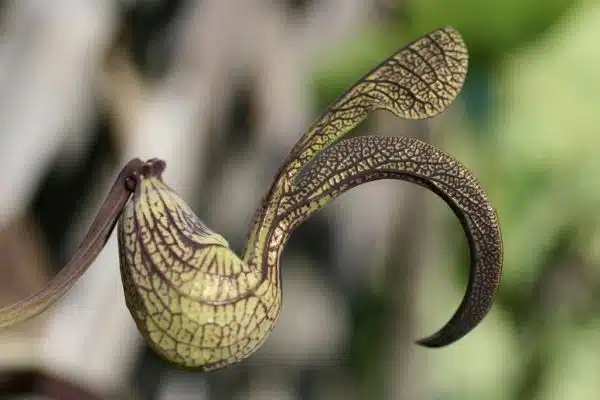




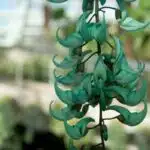

![How To Grow And Care For Corkscrew Vine 10 Strophanthus preussii [Corkscrew Flower, Poison Arrow Vine, Spider Tresses, Tassel Vine] Apocynaceae](https://green-life.blog/wp-content/uploads/2023/04/KW5aFOG5S3jq-150x150.jpg.webp)
